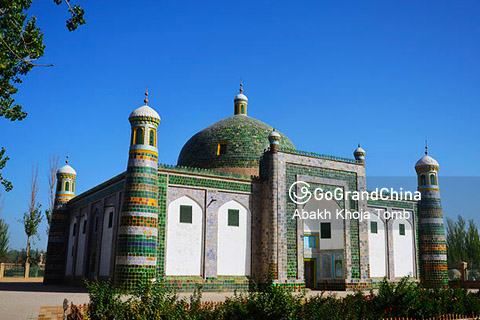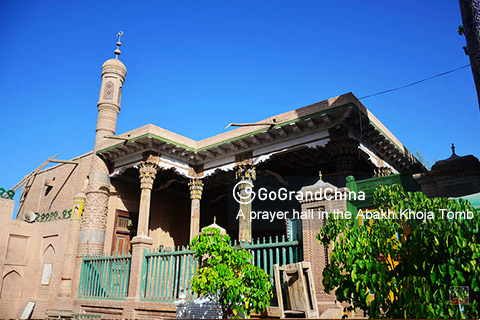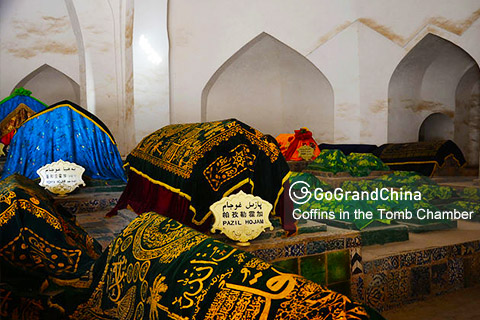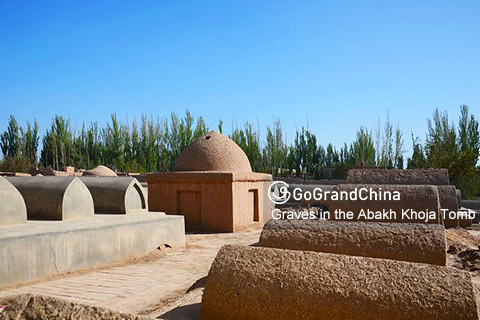You have no items in your shopping cart.
Abakh Hoja Tomb
Introducing Abakh Hoja Tomb
Abakh Hoja Tomb, also known as Xiangfei Tomb, is a mausoleum in Kashgar. Abakh Hoja Tomb is constructed around 1640 AD, and is the largest and most respected Islamic burial site in the region. Legend has it that a total of 72 members spanning 5 generations of the family of an Islamic sage find their eternal rest in the tomb. The shrine is frequented by many visitors and has been officially recognized as a tourist destination by Chinese authorities.
History of Abakh Hoja Tomb
The mausoleum was initially built in 1640 as the tomb of Yusup Hoja, a renowned Islamic missionary, was the first person buried at the Abakh Hoja Tomb. Following his passing, his son, Abakh Hoja, continued his legacy and rose to prominence as a respected Islamic leader of the Ishan sect (依禅派) in Kashgar at the beginning of the Qing Dynasty (1644-1912). Due to Abakh Hoja’s greater renown, the family tomb was later named the Abakh Hoja Tomb in 1693, upon his death and burial there.
Abakh Hoja Tomb Fast Facts
• AKA: Afaq Khoja Mausoleum; Xiangfei Tomb
• Chinese Name: A Ba He Jia Ma Zha 阿巴和加麻札
• Best Time to Visit: August & September
• Recommended Visiting Hours: 1 - 2 x Hours
• Things to Do: Photography, Islamic Architecture
• Opening Hours: 9:30 - 21:30
• Entrance Fee: CNY 30
• Address: Haohan Village, Kashgar city, Xinjiang Uygur Autonomous Region
Watch this video showcasing Abakh Hoja Tomb
Kind Notice: This video is not available in China (YouTube is blocked).
What to expect at Abakh Hoja Tomb
The mausoleum is perhaps the finest example of Islamic architecture in Xinjiang. A large dome of 17 m is at the center surrounded by four corner minarets with stripes and arabesque floral patterns. Each of the windows of the minarets are in a different geometric pattern while the tops have turrets with an inverted lotus dome and scalloped edges. The entrance to the mausoleum is a majestic facade and a tiled iwan-niche style typical of Central Asian mosques.


The tombs are decorated with blue glazed tiles and draped in colorful silks. Inside the tomb hall is the Casket of Iparhan which supposedly carried her from Beijing. There is a mausoleum, four prayer halls which are supported by wooden beams with muqarnas on the capitals, a lecture hall and a cemetery which is still in use by the Ugyhur population and has distinctive mud and brick tombs. A gateway also has blue glazed tiles and there is a pond in the courtyard for people to cleanse before entering.


How to get to Abakh Hoja Tomb
• Take bus 3 or tourist line 1 to Xiang Fei Yuan Station, or bus 20 to Xiang Fei Mu Station.
• Rent a car/bus from GGC to enjoy a hassle free private transfer from hotels in Kashgar to Abakh Khoja Tomb.
Additional travel advice on Abakh Hoja Tomb
• Please respect the Muslim traditions and customs, and keep quiet in the Tomb site.
• Please dress appropriately. Men and women should wear clothes with long sleeves and long pants. Don’t wear shorts.
There are no products matching the selection.

